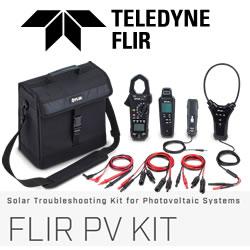Utilities are turning to energy storage systems (ESS) to help power grids withstand the effects of high peak demands, instability and the unpredictability of energy that can be gone with the wind.
How Battery Power Sustains Wind-Blown and Sun Struck Grids
Liza Knutsson | Parker Energy Grid Tie Division
Energy storage systems continue to grow in popularity as renewable energy sources like wind power are connected to the grid at an unprecedented rate. California alone plans to commission 1.3 gigawatts of storage by 2020, and similar trends are being seen globally. In Canada, the Government of Ontario’s Long Term Energy Plan (“LTEP”) calls for a total of 50 MW of storage capacity. Although this may not seem like much in comparison, with Canada’s focus on energy policy, energy storage is expected to become critical to the success of policy goals affecting de-carbonization and enabling a true “Smart Grid.”
According to National Resource Council Canada (NRC), although Canada's electricity grid is among the best in the world, it will require significant maintenance and upgrades over the next 20 years, potentially raising energy costs. NRC's Energy Storage for Grid Security and Modernization initiative is exploring energy storage technologies to help defer the costs of transmission and distribution renewal while stabilizing the intermittent nature of renewable energy and enabling peak shaving and arbitrage.
While energy storage can use a range of media, including compressed air, pumped hydro, gravity and flywheel, battery-based systems are rapidly gaining market share and acceptance due to advances in their design. Properly packaged, they offer advantages in transportability and size. Advances in battery design and construction have led to improved efficiency and lifespan, as well as enhanced safety.

Typical outdoor PCS

Typical outdoor battery container
Energy storage can offer a variety of benefits to grid quality, based on the configuration of batteries and setup of the system. Some configurations are useful for rapid response short-term discharge (measured in milliseconds) to maintain grid frequency stability and power quality. Others can supply a longer duration output to perform load balancing and peak shaving, or even backup power on a microgrid. A battery energy storage system (BESS) can offer the following benefits to the utility or power provider who is faced with the combination of peak demands from users, unpredictable generating resources and an aging infrastructure:
-
Frequency regulation. Because utilities must maintain their output within a narrow frequency range, this is a common application for PCS/BESS. High demand can cause a slight drop in frequency, especially on systems of lower capacity. A BESS can compensate for peak loading with a high-energy discharge through the PCS if it has subcycle response time.
-
Ramp rate control/capacity firming. This is especially important with renewable energy sources such as wind and solar farms. In these applications, the storage element can fill the gaps that occur when output dips due to a major reduction in wind energy or when clouds move over a solar farm.
-
VAR support. Reactive loading reduces the efficiency of T&D lines, but an appropriately designed BESS can compensate by supplying an adjustable range of real or reactive power. This allows more efficient use of power lines and distribution equipment.
-
Replacing spinning reserve. Reserve capacity helps maintain output during generator failure or unexpected transmission loss, which could require power reductions to customers. Keeping generator capacity online but unloaded wastes fuel and causes unwanted air emissions. A BESS can take the place of conventional spinning reserve generation and improve efficiency.
-
Black start. This capability allows a power plant to bootstrap itself after a blackout, grid connection loss and/or loss of generation capacity. A BESS can provide the balance of plant power needed for a restart.
-
Arbitrage/time shifting. This is the storage of low-cost power for later sale at higher prices. Generally this occurs during hours of lower demand.
-
T&D upgrade deferral. Being able to defer additions to T&D infrastructure is attractive to utilities that are experiencing significant, albeit uneven, growth in power usage. Generally, demand is characterized by ever higher peak loads that occur with increasing frequency. Eventually, existing T&D infrastructure becomes the weak link between a power plant and customers. A utility-scale BESS can be deployed near the load to level out power flow and delay a costly upgrade.
BESS Basics
The battery energy storage system consists of two main parts – a bank of batteries and a power conversion system (PCS) used to interface the batteries to the grid. The batteries can be any of a number of available chemistries, with lithium ion being a popular choice in utility scale installations. Individual battery cells are connected in a series/parallel arrangement in order to obtain the desired terminal voltage for highest efficiency and required storage capacity. An integral part of the battery bank is the battery management system (BMS) that monitors battery condition, charge rate and other variables. The BMS will typically report back to the PCS or Emergency Management System (EMS), allowing it to take action when a battery related anomaly occurs.
The bi-directional power conversion system is a critical part of the BESS, as it is responsible for the charging and discharging of the batteries, converting their direct current (DC) to the alternating current (AC) used by the grid, and keeping the AC synchronized with the grid frequency.

Modularity for ease of service

HMI screen view
At the heart of the PCS is a grid tie inverter, a device that converts DC to AC. It uses high-power insulated gate bipolar transistors (IGBTs) capable of high-speed switching and full-power delivery in either direction within milliseconds. For DC to AC inversion, this pulse-width-modulated (PWM) switching technology includes automatic synchronization with the AC power grid's frequency and zero crossings. Since the goal of the PCS is to appear to the grid as a stable synchronous generator, integral harmonic filters are used to deliver pure sine wave power well within IEEE519 guidelines for total harmonic distortion. The system can provide automated sequenced shutdown and disconnection under power loss in compliance with IEEE 1547 guidelines or can be configured to function in island mode, providing backup power for an isolated microgrid.
Other elements in the PCS include devices that monitor operating conditions, detect power quality and provide protection in case of thermal or electrical overload conditions.
BESS Design
Given the sometimes remote and rugged terrain that is home to wind farms, the physical design of the BESS is important to consider. Typically there is not a lot of weather-protected indoor space available, so a direct outdoor design is key. Good thermal management is integral to the design to protect inverters, batteries and ancillary components. Cooling system design in grid-tie inverters traditionally has relied on air or liquid water-glycol cooling. Air cooling has low heat exchange efficiency and can consume a lot of energy. Chilled water-glycol requires a substantial volume of liquid to be pumped through the system, which consumes significant space and power, and raises concerns about corrosion and other maintenance issues.
To address these shortcomings, the option of closed-loop evaporative cooling can be used. In this cooling system, a refrigerant such as R134a is circulated at low pressure through the thermally critical components inside the PCS. These can include the IGBTs, inductors, and others. As heat from the components transfers to the refrigerant, it partially evaporates, with the resulting vapor sent to a condenser. The vapor then condenses to a liquid form and returns to the holding reservoir, where it is again pumped through the components.
Taking advantage of the “heat of vaporization” in a two-phase system, this method of cooling has proven to be very efficient, requiring much lower liquid flow than in a water/glycol system, and therefore smaller, lower power pumps.
Smart Features
In addition to simply charging and discharging batteries, many systems provide an important extra benefit – the capability to provide both real and reactive power. This capability provides the ability for the BESS to truly support the grid and to tolerate grid faults. Firmware and programmability in the PCS can allow for flexibility of control and operating autonomy. If PCS contains the algorithms for real and reactive power management, it can eliminate or reduce the responsibility of external site management by the utility. Consider the inverter’s tolerance to grid disturbances and its course of action when a disturbance occurs. The well designed PCS should include robust LVRT (low voltage ride-through), HVRT (high voltage ride-through), and FRT (frequency ride-through) and should be able to provide VAR support over a wide range of operating conditions during these events.
Current Installations
Ontario's grid operator, the Independent Electricity System Operator (IESO), has selected storage technologies from five companies offering ancillary services to support higher reliability and efficiency of the grid. According to IESO, by procuring storage, Ontario will get a head start on testing new technologies to help manage the changing conditions on the power system. The IESO will take the learnings from these new projects, totaling 34 megawatts (MW), to understand how to better manage the day-to-day operation of the power grid using electricity storage.
Examples of installations using grid-connected battery energy storage systems in the U.S. and abroad will offer many more learning opportunities. These include:
-
AES Energy Storage, Elkins, WV: Laurel Mountain wind farm;
-
Sochi, Russia: Olympic Winter Games site;
-
FSK St. Petersburg, Russia;
-
AES Johnson City, NY: BESS installation;
-
AES-Gener, Atacama, Chile: Los Andes Facility;
-
Snohomish PUD, WA: Everett substation “MESA-1” projects
More examples may be found online at the Department of Energy’s public database: http://www.energystorageexchange.org/

About Liza Knutsson
Liza Knutsson is the Product Marketing Manager for Parker Hannifin’s Energy Grid Tie Division in Charlotte NC. She has 8 years of marketing and applications experience in electrical power conversion. Reach her at lknutsson@parker.com or 704-588-3246.
The content & opinions in this article are the author’s and do not necessarily represent the views of AltEnergyMag
Comments (0)
This post does not have any comments. Be the first to leave a comment below.
Featured Product

